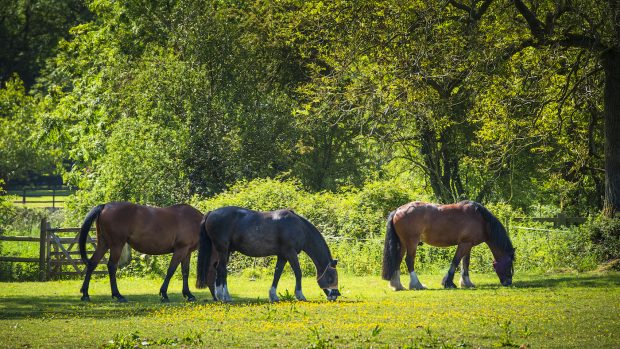More owners are coming forward to share their stories following a spate of deaths caused by seasonal disease equine atypical myopathy.
Following last week’s news story (24 October) several H&H readers have been in touch urging others to be aware of signs of the fatal and rapid-onset disease.
Signs include dark urine, colic-like signs, muscle weakness, trembling and sweating.
Jackie Stevens from Warwickshire lost her five-month-old foal Sable on 15 October.
“I am devastated,” she told H&H. “I knew nothing about this disease before. It kills so fast she had no chance.”
Jade Kephalas’ seven-year-old gelding Oliver died on 17 October. He was grazing in a field in Chelmsford, Essex.
“We thought it was colic to start with but he was spiralling downhill, and it was terrifying to watch. He was soaked with sweat and there was nothing we could do to save him,” she told H&H.
“It was horrific and not something I’d been aware of in my 33 years of owning horses.”
The condition is believed to be caused by the toxic hypoglycin A, which is found in sycamore seeds.
The seasonal disease — which weakens the muscles in the horse’s body — is more common in autumn when seeds are falling, with high winds carrying them.
“It’s been so windy recently,” added Jade. “And Oli was a bit of a pig, he’d rummage through anything to eat, even though there was plenty of grazing.”
Last week Bell Equine in Kent and Royal Veterinary College confirmed they had both had cases of the illness. RVC reported five cases in 72 hours.
“It seems more common than it used to be but there’s no good reason that sycamores should suddenly be producing more toxins, though it could be to do with climate change,” said the RVC’s equine atypical myopathy expert Dr Richard Piercy.
“Much more research is needed. But the more people that are aware the better. You should give supplementary feed, especially after storms when the wind and rain carry the leaves and seeds further.”
There is currently no antidote to the condition, which has a 70-80% fatality rate. Horses diagnosed early can be treated with intravenous fluids.
H&H vet Karen Coumbe added that it was essential to raise awareness.
“We need to spread the word as equine hospitals have seen a depressingly large number of cases recently,” she said.
This news story was first published in Horse & Hound magazine (30 October, 2014)





